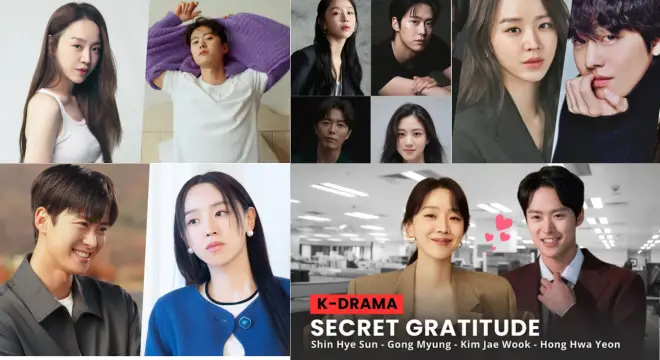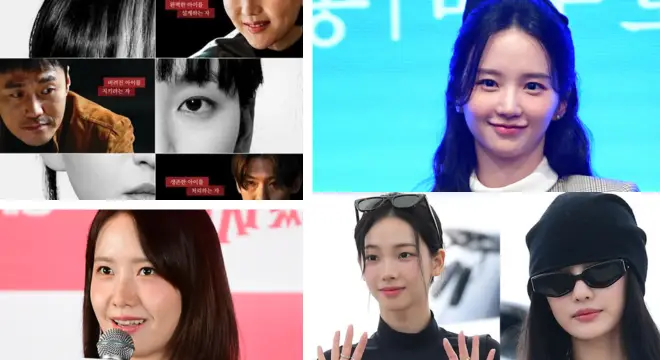When love brings you to a new land, sometimes it also opens the door to discovering a whole new culture. For So Jeong-yeo, a 53-year-old Taiwanese woman living in Incheon, South Korea, her life’s journey beautifully combines both — love and art. This year, she became the top winner in the foreigner category at the 16th Gwanghwamun Calligraphy Contest, held in celebration of Hangeul Day in Seoul.
The results, announced on October 23, 2025, recognized her outstanding skill and creativity in Hangeul calligraphy, Korea’s native writing system invented by King Sejong the Great. Her award-winning piece will soon be exhibited at the Sejong Cultural Center in Seoul this November, where it’s expected to inspire both Koreans and foreigners alike.
A Love Story That Led to a New Home
So Jeong-yeo’s story sounds like something straight out of a K-drama — and in fact, she says her favorite show is Crash Landing on You. “The love between people from completely different cultures felt like my own story,” she said with a smile. Like the characters in that drama, So’s cross-cultural journey began far from Korea.
Back in 2000, while studying abroad in Canada, So met the man who would later become her husband — a quiet, warm-hearted Korean student from Gyeongsang Province. “He wasn’t good at expressing emotions, but one day, he just held my hand while we were walking,” she recalled. “That’s when our story started.”
After their studies ended, the two continued a long-distance relationship that cost them hours of late-night calls — and thousands of Taiwan dollars — every month. “If we’re spending this much talking, maybe it’s better to live together,” he eventually proposed. Despite her friends’ concerns about marrying into a Korean family, So followed her heart. The couple married on December 30, 2001, and she moved to Korea — a decision that would transform her life in ways she never expected.
Discovering Hangeul and the Beauty of Korean Culture
Settling into life in Korea wasn’t easy. So had to adjust to a new language, customs, and even how families live together. “In Taiwan, everyone has their own room and personal items. Here, people share almost everything,” she said with a laugh. But one thing fascinated her deeply from the beginning — Hangeul, the Korean alphabet.
While many foreigners find Hangeul difficult, So found it “incredibly logical and beautiful.” Having previously practiced Hanja calligraphy (the traditional Chinese script), she was immediately drawn to the artistic potential of Korea’s writing system. “Hanja looks like pictures, but Hangeul is simpler, more expressive, and full of rhythm,” she explained.
For the past 10 years, So has been practicing Hangeul calligraphy — often spending hours perfecting each stroke. She began entering competitions in 2017, slowly making her mark in the community. But this year, for the first time, she took the top spot among 109 foreign participants, earning the King Sejong Award — the highest honor in her category.
The Art Behind Her Award-Winning Work
What made So’s piece stand out wasn’t just her technical skill, but her artistic choice. She recently changed her writing style from Banhonche — a style with uniform, even strokes — to Gungseo, a more expressive and traditional form that varies in thickness and movement. “People say Gungseo feels serious,” she said. “But to me, it’s beautiful because every stroke tells a story.”
During the contest, participants were asked to write about the theme “Hangeul Day Opens the World.” So’s piece began with the line:
“Following the will of heaven, King Sejong opened the letters…”
She described the moment of writing as emotional and intense. “I wore a traditional durmagi (Korean overcoat), and it felt like sitting for a royal exam in front of King Sejong himself,” she said. Normally, a perfect calligraphy piece takes her about six hours to complete. But this contest allowed only two hours. “I felt dizzy trying to finish in time — I imagined how scholars in the past must have felt during real exams!”

Family Reactions and Cultural Pride
When her daughter, Lee Ha-young, called home to share the good news, So’s husband couldn’t believe it. “Your mom? Really?” he laughed in surprise. The family’s pride, however, quickly turned into joy and celebration. “It’s an honor not just for me, but for my whole family,” So said warmly.
Even after two decades in Korea, So still finds speaking Korean a bit challenging, but her writing and reading skills are impeccable. “In Chinese, the number ‘1’ is pronounced yi, so I sometimes get confused,” she admitted, giggling. “But I still find Hangeul much easier than Chinese characters.”
Her favorite Hangeul word is surprisingly simple — ‘bread’ (ppang). “It’s round, soft, and cute. Just looking at it makes me smile,” she said. As for words she dislikes? “All the bad words,” she said with mock disgust. “They ruin the beauty of Hangeul!”
A Cultural Bridge Between Korea and Taiwan
Beyond the personal recognition, So hopes her achievement can help more people outside Korea appreciate the beauty of Hangeul. “Writing calligraphy is one of the fastest ways to understand Korean culture,” she said. “It teaches patience, focus, and respect.”
She plans to continue improving her craft and dreams of one day debuting as a professional calligraphy artist. Her award-winning piece will be exhibited at the Hangeul Gallery in the Sejong Cultural Center from November 18–26, where visitors will be able to see her work up close.
In her artwork, So Jeong-yeo transcends being a “Taiwanese daughter-in-law.” She embodies the ability to connect cultures through language, love, and art. Her own journey — from studying abroad in Canada to inhabiting a life in a place called Korea where she has learned its native script — proves the power of curiosity and dedication.
The Legacy of Hangeul Lives On
Over six hundred years ago, King Sejong created the Korean script called Hangeul in order to make reading and writing more accessible to Koreans. Today there are individuals such as So Jeong-yeo who keep this spirit alive by showing that the script doesn’t just belong to Korea, but has a message for the world.
As she prepares for her exhibition, So says she hopes visitors will see more than just beautiful brushwork. “I want people to feel the warmth of Hangeul — how it carries emotions, history, and identity,” she said. “It’s not exclusively about letters. It’s about love, life, and concatenation.”
In a world with clashing cultures, So’s story shows us how art – and importantly, simply language – are able to bridge divides. Be it through the steady stroke of a calligrapher’s brush or through the quiet courage of a woman who followed her heart across border dividers, the beauty of Hangeul continues to open the world, just as King Sejong once envisioned.


